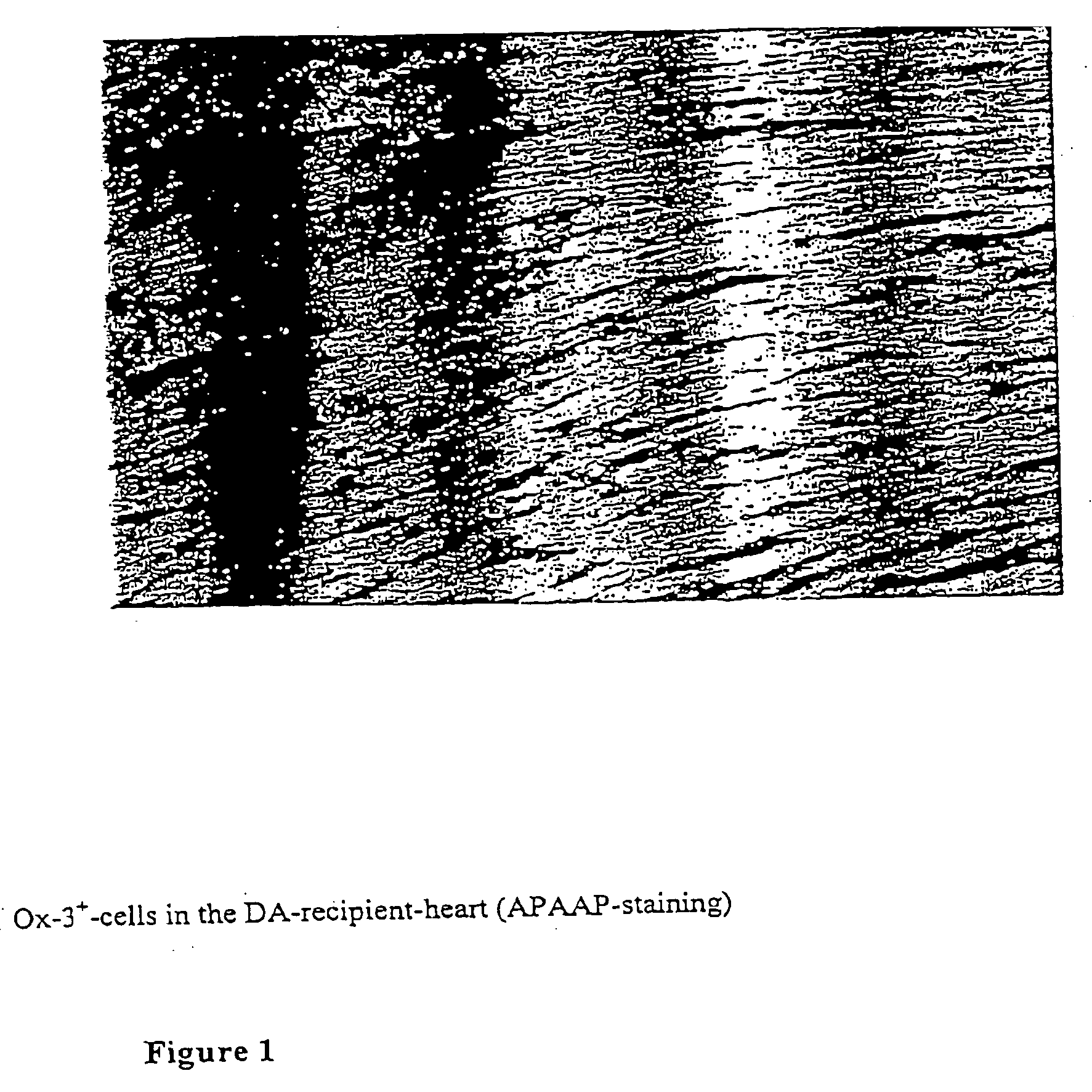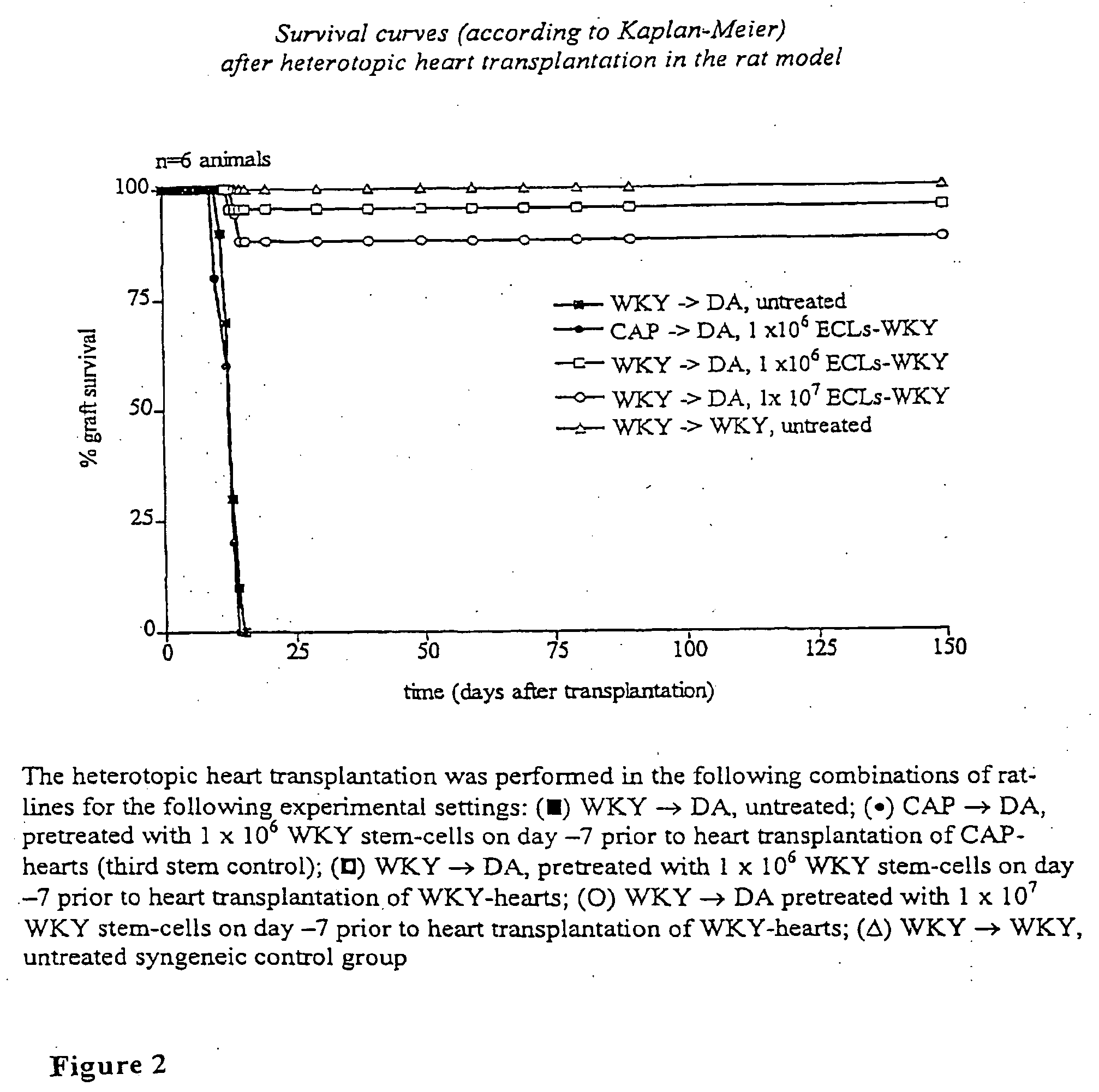Use of cells derived from embryonic stem cells for increasing transplantation tolerance and for repairing damaged tissue
a technology of embryonic stem cells and stem cells, which is applied in the direction of immunological disorders, drug compositions, cardiovascular disorders, etc., can solve the problems of increasing the risk of infection, and unable to achieve better long-term survival of the transplant. , to achieve the effect of limiting the administration of immune suppressive agents and preventing rejection
- Summary
- Abstract
- Description
- Claims
- Application Information
AI Technical Summary
Benefits of technology
Problems solved by technology
Method used
Image
Examples
examples
[0019] 1. Isolation and Culturing of the Rat-ECL
[0020] Mouse embryo fibroblasts (MEF) or rat embryo fibroblasts (REF) were prepared from 13-14-days pregnant animals that were mitotically inactivated by 3-5 treatments with mitomycin C (10 mu g / ml) for 2 or 1 hours, washed with phosphate buffered saline (PBS) and seeded in Nunc 4-well-dishes. The blastocysts were flushed out with PBS / 20% FCS (foetal calf serum) or a culture medium from the uterus of 4, 5 days pregnant rats, seeded on inactivated embryo fibroblasts and left untreated for 3-4 days in DMEM / 15% FCS / 2,500 mu / ml LIF ("Leukemia inhibiting factor", ESGRO, Life Technologies) with supplements (Iannaccone et al., Dev. Biol. 1994; 163: 288-292) in a medium of 6% C02 / air. During this time the blastocysts develop and attach to the feeder, and the ICM starts to grow, wherein the efficiency is depending from the genetic background. Filaments with an ES-cell like appearance are taken up and fractionated into several clumps by aspirati...
PUM
| Property | Measurement | Unit |
|---|---|---|
| time of survival | aaaaa | aaaaa |
| frequency | aaaaa | aaaaa |
| time | aaaaa | aaaaa |
Abstract
Description
Claims
Application Information
 Login to View More
Login to View More - R&D
- Intellectual Property
- Life Sciences
- Materials
- Tech Scout
- Unparalleled Data Quality
- Higher Quality Content
- 60% Fewer Hallucinations
Browse by: Latest US Patents, China's latest patents, Technical Efficacy Thesaurus, Application Domain, Technology Topic, Popular Technical Reports.
© 2025 PatSnap. All rights reserved.Legal|Privacy policy|Modern Slavery Act Transparency Statement|Sitemap|About US| Contact US: help@patsnap.com


